Mud Volcanoes
Today proved to be a long day of driving and sightseeing.
Gobuston
Gobuston is an area south of the city of Baku and was our first stop of the day. The area is famous for its Rock Art or Petroglyphs which date between 5000-20000 years ago. There was a small museum that gave an introduction to the art and then at the top of a rocky ridge a walk which led past a number of examples of the rock art. This walk also provided a fine view over the arid plain and its various industrial complexes south of Baku.



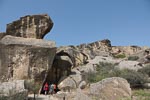
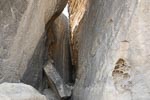
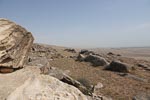
Mud volcanoes
Inland from the Gobuston rock art and at the top of a noticeable climb was a new tourist facility that was intended to display and explain one of Azerbaijan's more unusual tourist attractions. Mud Volcanoes; that's right both small and large mounds that periodically erupt mud. As you will see in the link just provided Azerbaijan has half of all the known mud volcanoes in the world. Some are on land but many are under the Caspian Sea.
Finally, despite its prominence in the world of mud volcanoes Azerbaijan largest mud volcano, named Otman Bozdag, is only the second largest in the world. Indonesia's mud volcano Lusi is the largest.
Somewhat surprisingly the Mud Volcano complex has devoted an entire building to a wonderful display of skeletons of a numerous and wide range of animals and reptiles. There appears to be no connection between this display \ and the Mud Volcanoes.


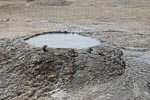



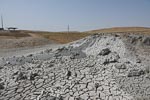
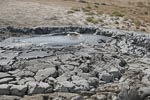
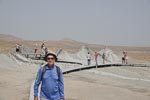
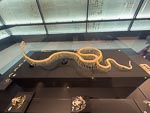


Flames of Baku
After lunch we headed back towards Baku but instead of the upmarket sky-scraper downtown we found ourselves wondering through what could only be described as the underbelly of Baku where the poorer residents live and work, and where the roads are not freeways but beatenup, sometimes paved small streets. Why were we in such an area? We where headed towards Yanar Dagh - Fire Hill a place where historically there have been three natural eternal fires fed by natural gas. These flames or fires date back centuries with claims that they were reported by Marco Polo. The three fires are the natural wonder from which Baku derives its emblem of 3 flames after which the 3 towers mentioned in yesterdays post get their name. Now unfortunately there are no longer three of these flames as nature has conspired to extinguish 2 of them.
The final visit of the day was a reconstructed Zoroastrian temple. Apparently there are still people in the world, and in Baku that follow this ancient religion.




